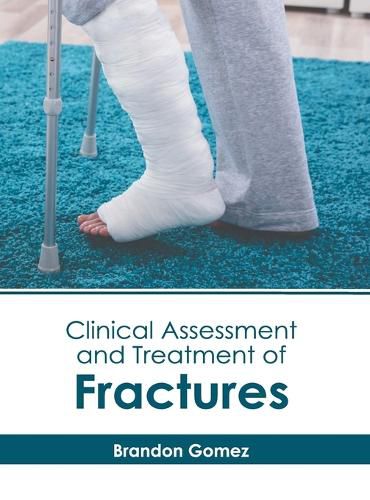Readings Newsletter
Become a Readings Member to make your shopping experience even easier.
Sign in or sign up for free!
You’re not far away from qualifying for FREE standard shipping within Australia
You’ve qualified for FREE standard shipping within Australia
The cart is loading…






A fracture refers to a break in a bone, which can happen due to injuries, falls or car accidents. The common symptoms of a fracture are intense pain, deformity, swelling, bruising, or tenderness around the injury, difficulty in moving a limb, inability to move the affected part, and numbness. There are various types of fractures including avulsion fracture, comminuted fracture, fracture dislocation, hairline fracture, oblique fracture, and pathological fracture. The diagnosis involves physical examination and diagnostic tests like bone scan, X-ray, MRI and CT scan. The treatment of fractures involves covering the fractures with a hard protection such as a cast or splint. In some cases, the method of traction is used for aligning the bone that promotes the healing process. This method involves the use of pulleys and weights to stretch the muscles and tendons around the broken bone. Surgery is also a treatment option for severe cases of fractures. This book outlines the clinical assessment and treatment of fractures in detail. It presents researches and studies performed by experts across the globe. Researchers and students in this field will be assisted by this book.
$9.00 standard shipping within Australia
FREE standard shipping within Australia for orders over $100.00
Express & International shipping calculated at checkout
A fracture refers to a break in a bone, which can happen due to injuries, falls or car accidents. The common symptoms of a fracture are intense pain, deformity, swelling, bruising, or tenderness around the injury, difficulty in moving a limb, inability to move the affected part, and numbness. There are various types of fractures including avulsion fracture, comminuted fracture, fracture dislocation, hairline fracture, oblique fracture, and pathological fracture. The diagnosis involves physical examination and diagnostic tests like bone scan, X-ray, MRI and CT scan. The treatment of fractures involves covering the fractures with a hard protection such as a cast or splint. In some cases, the method of traction is used for aligning the bone that promotes the healing process. This method involves the use of pulleys and weights to stretch the muscles and tendons around the broken bone. Surgery is also a treatment option for severe cases of fractures. This book outlines the clinical assessment and treatment of fractures in detail. It presents researches and studies performed by experts across the globe. Researchers and students in this field will be assisted by this book.